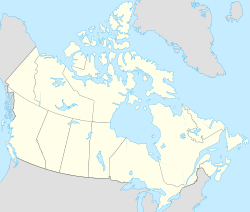Gravelbourg
| Gravelbourg | ||
|---|---|---|
| Town | ||
|
||
| Location of Gravelbourg in Saskatchewan | ||
| Coordinates: 49°52′26″N 106°33′18″W / 49.874°N 106.555°W | ||
| Country | Canada | |
| Province | Saskatchewan | |
| Census division | 3 | |
| Rural Municipality | Gravelbourg | |
| Post office Founded | 1907 | |
| Incorporated (Town) | 1916 | |
| Government | ||
| • Mayor | Edward Lagasse | |
| • Town Manager | Gord Murray | |
| • Governing body | Gravelbourg Town Council | |
| • MLA Wood River | Yogi Huyghebaert | |
| • MP Cypress Hills-Grasslands | David Anderson | |
| Area | ||
| • Total | 3.23 km2 (1.25 sq mi) | |
| Population (2011) | ||
| • Total | 1,116 | |
| • Density | 346.0/km2 (896/sq mi) | |
| Time zone | CST | |
| Postal code | S0H 1X0 | |
| Area code(s) | 306 | |
| Highways | Redcoat Trail | |
| Website | Town of Gravelbourg website | |
Gravelbourg is a small multicultural town in south central Saskatchewan, Canada. It is located just west of the Wood River at the junction of provincial Highway 43 and Highway 58, approximately 125 kilometres from Moose Jaw, Swift Current, and the United States border. The region served as a path for First Nations peoples many years ago, and was also integrated into the Redcoat Trail of the 19th century. Gravelbourg is now a key link on the 21st century Trans Canada Trail.
Gravelbourg is also referenced in the fourth verse of the North American version of "I've Been Everywhere", written by Geoff Mack and made popular in North America by Hank Snow and more recently Johnny Cash.
Gravelbourg was settled in the early 1900s and was one of the French block settlements of the Gravelbourg-Lafleche-Meyronne area in southwestern Saskatchewan, In 1930 it became the cathedral city of the Roman Catholic diocese of Gravelbourg.
Gravelbourg carries the name of its founder Abbé Louis-Pierre Gravel. Louis-Pierre Gravel was designated a Person of National Historic Significance in 1956. The inscription on the monument in Gravelbourg built in 1958 to honour him reads:
“Between 1906 and 1926 more than ten thousand Canadian citizens, many of whom were then living in the United States, answered the call of Reverend Louis-Pierre Gravel to make their homes on the broad plains of Saskatchewan where they built towns and established French-speaking cultural institutions.” Parks Canada
...
Wikipedia



